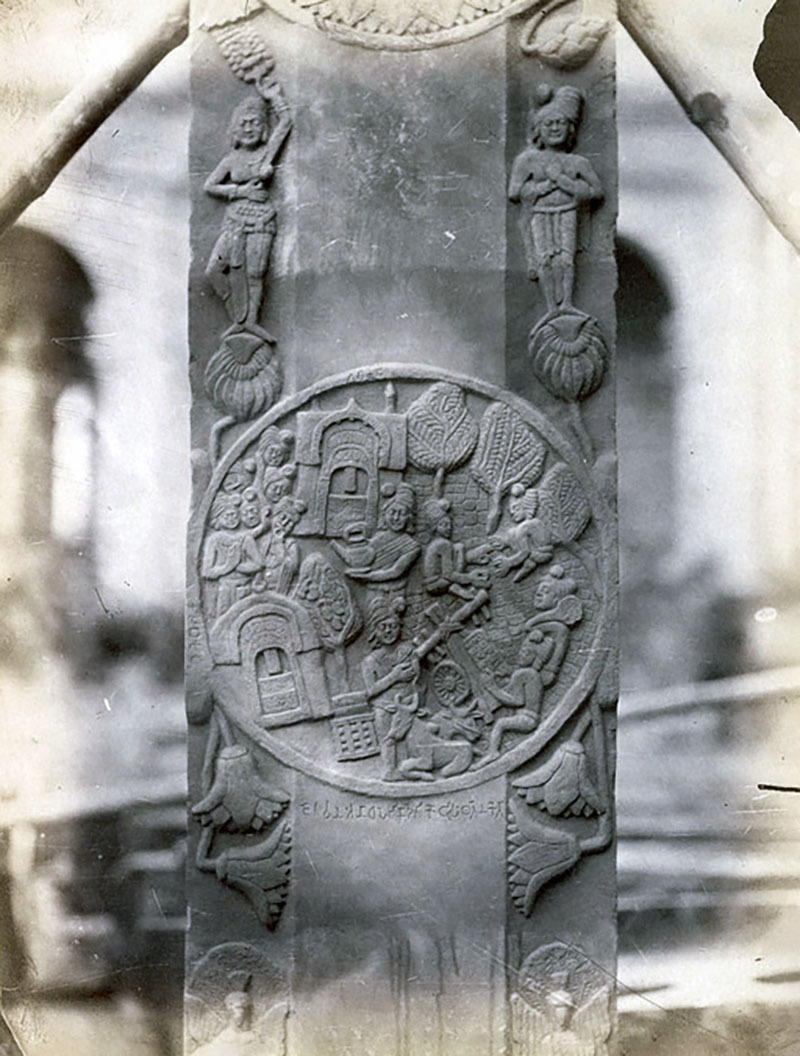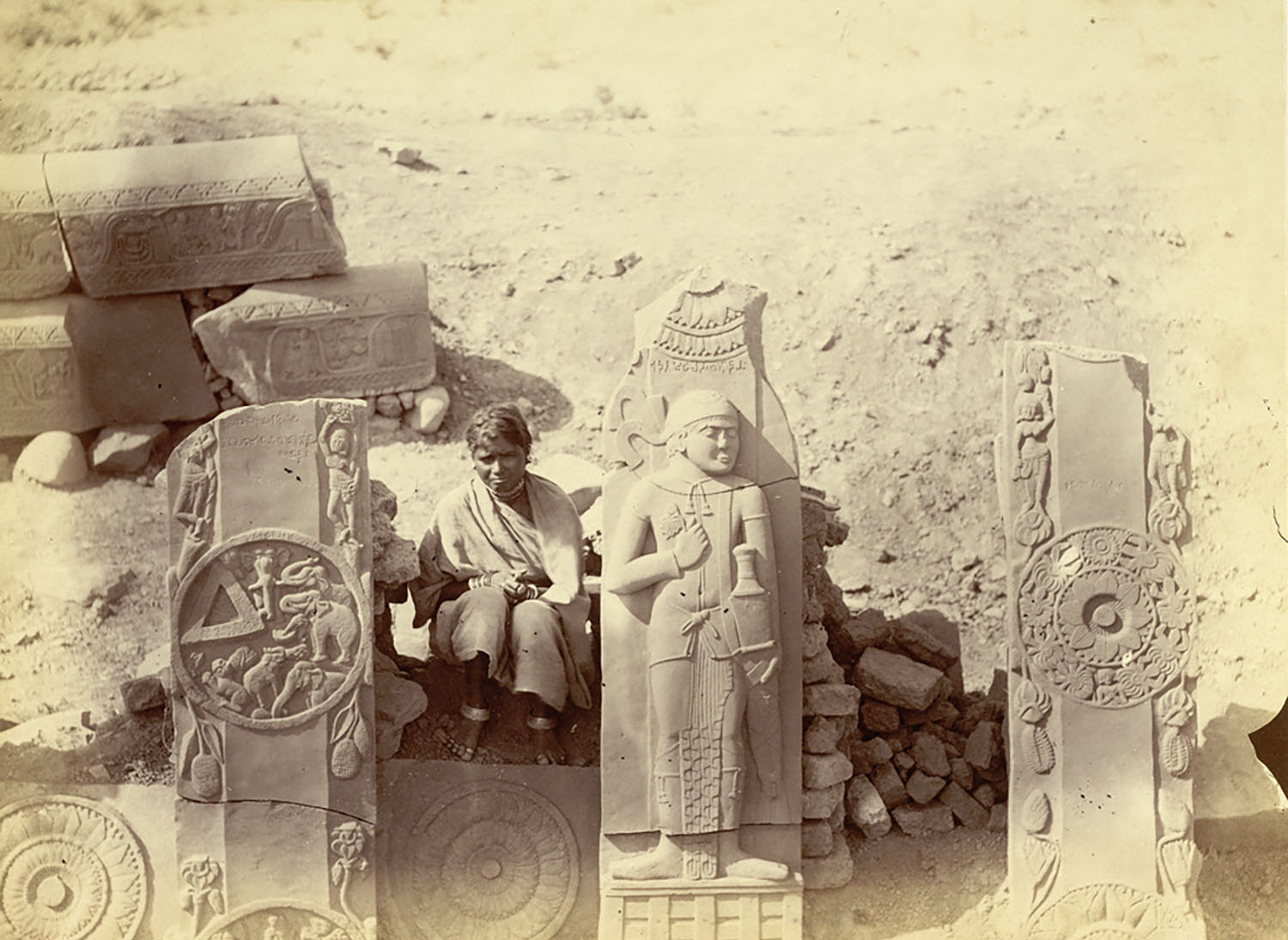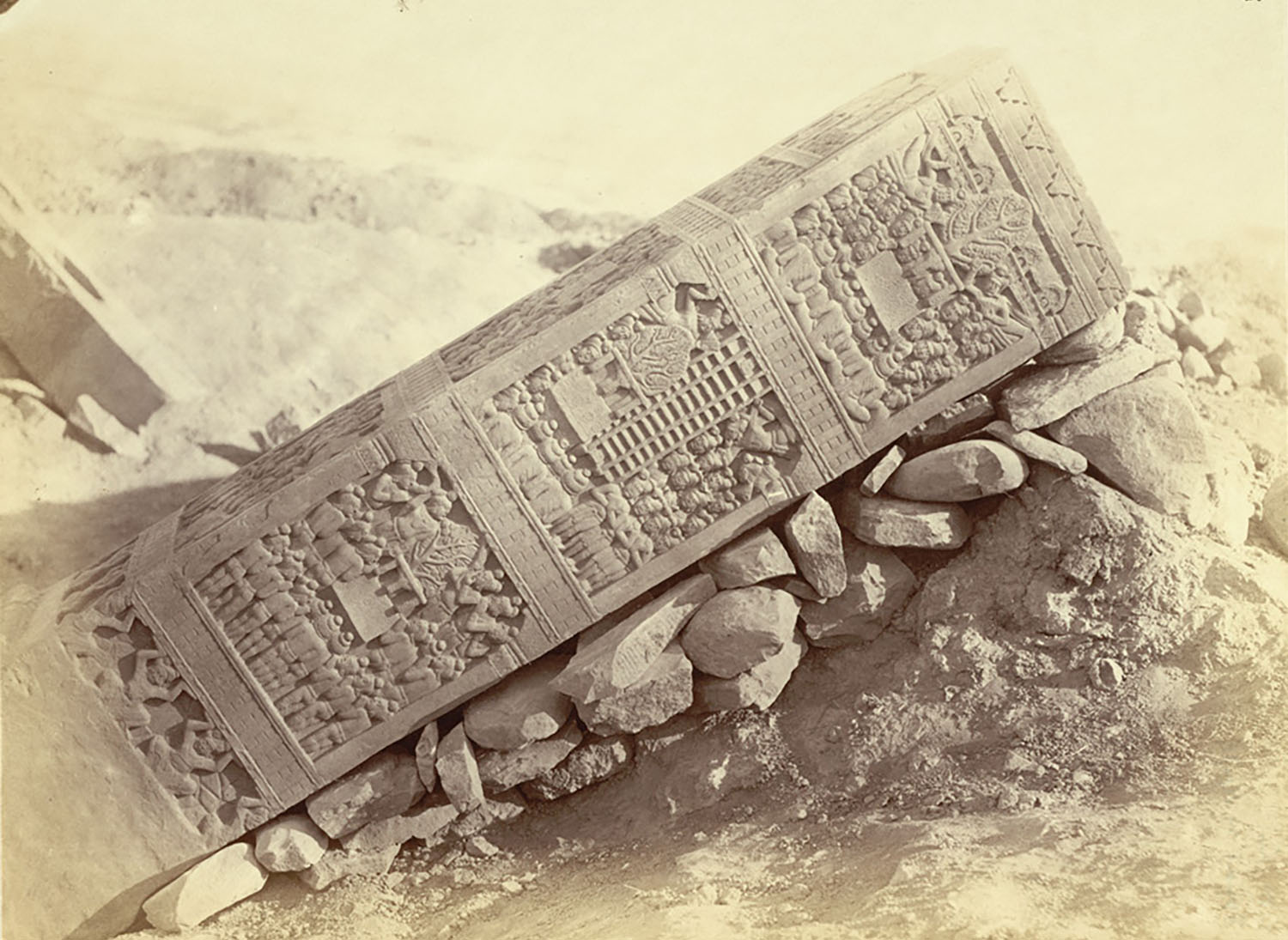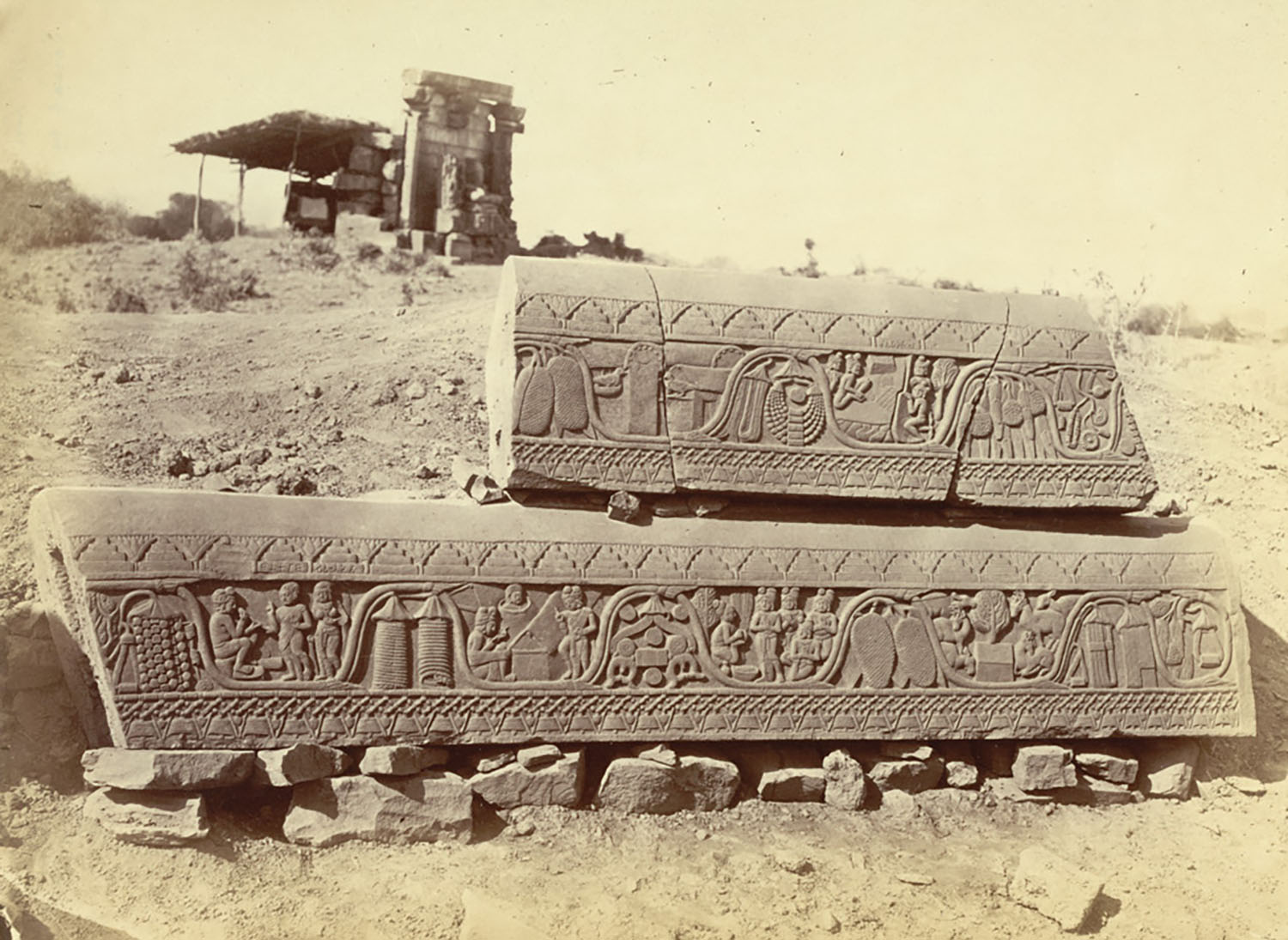Intricately carved sandstone vedika and toranas that once surrounded the Bharhut stupa in Satna, Madhya Pradesh, these shallow relief carvings were made during the Shunga Empire, and are some of the earliest examples of narrative Buddhist art. They depict the teachings of the Buddha, scenes from the Jatakas and stories from the life of the historical Buddha Shakyamuni through iconography.
Although many of these scenes make direct reference to the Buddha, and are characteristic of Buddhist art before the first century CE, he is never represented in an anthropomorphic form in the reliefs, but instead, through symbolic motifs such as wheels, thrones and footprints known as buddhapadas. While the stupa itself is no longer standing, its remains, including part of the railing and the gateways, were recovered by Alexander Cunningham in 1873. Scholars believe that although the Bharhut stupa was erected around 250 BCE during Ashoka’s reign, it was expanded nearly a century later, during the Shunga Empire, with the addition of the vedika and toranas at the four entrances of the stupa.
The Bharhut vedika stood at a height of 3 metres and a circumference of 20 metres. It carried carvings on every element of its structure, including the columns; roundels or medallions connecting one column to the next; and panels that ran the length of the vedika, connecting at its top. The relief carvings, which were carried out on both the interior and exterior surfaces of the vedika, range from narrative depictions of the Jatakas to carvings of individual figures, deities such as yakshas and yakshis along with various plant and animal motifs central to Buddhism, such as lotuses, elephants and monkeys.
Each column of the vedika carried a different engraving, including human forms and animal motifs. A popular symbol was the lotus which, in some places, was depicted just as a flower, and in other places, with human forms emerging from its centre. Columns also showed widely represented subjects in Buddhist art, such as Gajalaksmi and Chakravaka. Medallions that were placed between the columns usually carried depictions of the Jatakas to highlight legends of the Buddha’s previous births and his key virtues. Each medallion showcased a different episode. One of the most renowned depictions is that of the Mahakapi Jataka. A continuous motif of the kalpataru extended the length of the vedika, issuing strings of gems, fruits and flowers connecting the various narrative depictions. Despite the diversity of forms on the vedika, most carvings were accompanied by written inscriptions in Brahmi, making it easier to identify the subject.
The torana was also made of stone and carved on the exterior and interior sides. It is assumed that there were four toranas at the Bharhut stupa, even though remains of only the eastern torana have been found. Approximately 6 to 7 metres in height, the torana consisted of two columns that supported three carved architraves. The end of the architraves took the shape of a makara, extending outward with a slight arc. Motifs on the columns of the torana included animals, plants, abstract and architectural elements that indicated the influence of the Hellenistic school, among others from beyond the subcontinent, in Shunga architecture, along with inscriptions in Kharosthi stating that the torana was erected during the Shunga Empire. However, these motifs are severely damaged. The torana is crowned with a lotus disc, on top of which is the dharmachakra with triratna on each side, symbolic of Buddhist teachings and reminiscent of Mauryan art.










